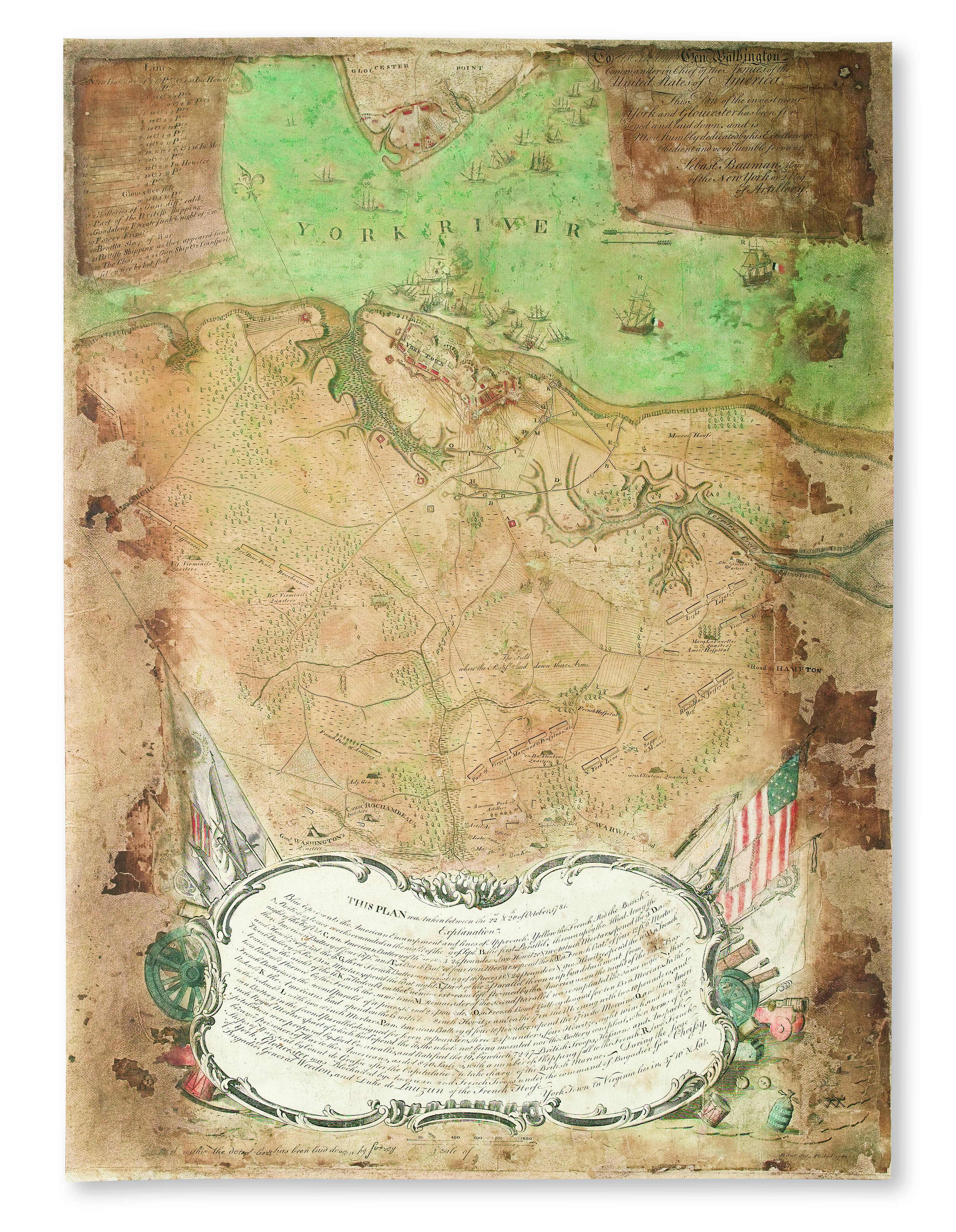Caren Material to be Sold at Swann this Fall
- by Bruce E. McKinney

Bauman, Sebastian. Plan of the Investment of York and Gloucester. Engraved hand-colored map.
Eric C. Caren, the exceptional collector of newspapers, books and documents, has consigned to Swann Galleries in New York material from his collections of How History Unfolds on Paper. The building of this collection has been a four-decade endeavor. Three to five sales to disperse a small portion of the collection are envisioned, the first slated for September or October. Quoting from a recent Swann press release prepared by Rick Statler who will supervise the cataloguing – “Eric has long sought to acquire representative documents from every important event of modern history - spanning European and American books, newspapers, manuscripts, photographs, and broadsides.”
Among the highlights are:
o The 1674 authorization signed by King Charles II for Edmund Andros to take possession of New York from the Dutch. This document, which has been called "New York State's birth certificate," and was Lot 1 in the Malcolm Forbes auction in 2002.
o The manuscript account between George Washington and his personal physician James Craik, detailing the medical care of Washington, his family, and his slaves, 1786-89
o A broadsheet extra of the Boston Post-Boy, describing the demonstrations at the Liberty Tree against the newly instituted Stamp Act, 4 November 1765
o A Quaker emissary's eyewitness description of a conference with the Six Nations Indians and their release of prisoners, 1762.o The first printed baseball scorecard, from an 1866 championship game between Brooklyn and Philadelphia
o An original plan of the R.M.S. Lusitania by its builders, John Brown & Company, 25 November 1907
o Original photographs of 19th century outlaws including Tiburcio Vasquez [signed]. The Dalton Gang and the James-Younger Gang.
Also being offered are first editions of Hakluyt's Principall Navigations and Exquemelin's Bucaniers of America; photographs ranging from the early West to the Beatles; a rare 1789 illustrated broadside printing of "Remarks on the Slave Trade"; Bauman's plan of the battle of Yorktown; and an impressive variety of newspapers from the 17th, 18th, 19th, and 20th centuries.
The challenge in cataloguing these sales will be in their uniqueness. Individual items relate to specific events. The catalogue, to be compelling, will require a strong narrative to connect these events over a period of more than three hundred years. For Swann, landing these sales is an important coup but carries with it a responsibility to extend and transform our understanding of how sales of traditional and non-traditional paper collectables should be approached. Ephemera, broadsides and manuscripts as well as books are expected to carry the thread of advancing ideas. Contextualizing the material will be the key if these collections are to attract, beyond the experts, the simply interested. The material is unusual, in many cases exceptional.